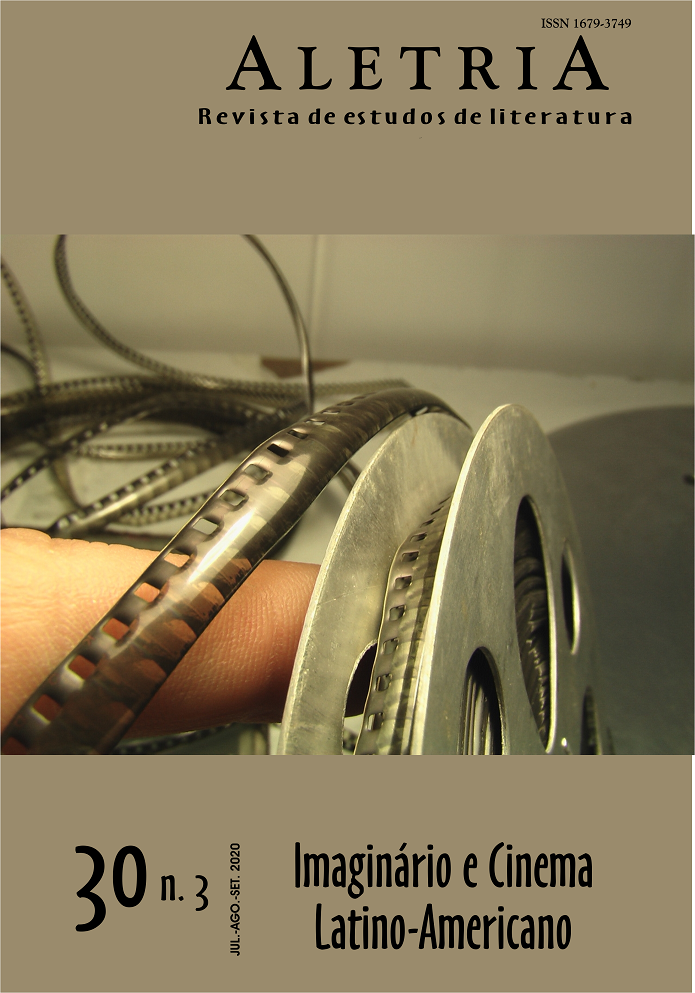Experimentação, corporeidade e abjeção
outros delírios possíveis em Quem é Beta? (1973), de Nelson Pereira dos Santos
DOI:
https://doi.org/10.35699/2317-2096.2020.25636Palabras clave:
personagens femininas, abjeto, cinema brasileiro, ficção científica, Quem é Beta?, Nelson Pereira dos SantosResumen
This article aims at understanding, from the construction of the female characters in Quem é Beta? (1973), by Nelson Pereira dos Santos, what is reflected in his images in the midst of an apocalyptic future that points to memory – technology achieved by few – and survival through violence as fissures that lead us to question the human. By means of authors who approach the despicable female – or abject –, such as Julia Kristeva (1986); human temporality, such as Georges Didi-Hubermann (2011); and the concomitant relations between cinema and history, such as Marc Ferro (1992), this study points to the Brazilian cinema genre of science fiction – a terrain almost, but not completely uninhabited – as an authentic glimpse of survival to think the feminine.
Descargas
Citas
COUTO, José Geraldo. “Quem é Beta?” é “Mad Max” dos pobres. Folha de S. Paulo, São Paulo, 17 fev. 1994. Ilustrada. Disponível em: https://www1.folha.uol.com.br/fsp/1994/2/17/ilustrada/24.html. Acesso em: 17 out. 2018.
DIDI-HUBERMAN, Georges. Sobrevivência dos vaga-lumes. Tradução de Márcia Arbex e Vera Casa Nova. Belo Horizonte: Editora UFMG, 2011.
FERRO, Marc. Cinema e história. Tradução de Flávia Nascimento. Rio de Janeiro: Paz e Terra, 1992.
KRISTEVA, Julia. Powers of Horror: An Essay on Abjection. Tradução de Leon S. Roudiez. New York: Columbia University Press, 1982.
LYRA, Bernadette; SANTANA, Gelson. Cinema de bordas. São Paulo: Editora a-lápis, 2006.
PRECIADO, Paul. B. Manifesto contrassexual: práticas subversivas de identidade sexual. Tradução de Maria Paula Gurgel Ribeiro. São Paulo: n-1 edições, 2014.
QUEM é Beta?. Direção: Nelson Pereira dos Santos. Fotografia: Dib Lutfi. Petrópolis: Dahlia Film; Rio de Janeiro: Regina Filmes, 1973. 1 vídeo (85 min., col.). Disponível em: https://www.youtube.com/watch?v=aM1CYdePCA8&t=1s&has_verified=1. Acesso em: 20 set. 2018.
RAMOS, Fernão Pessoa; SCHVARZMAN, Sheila (org.). Nova história do cinema brasileiro. São Paulo: Edições SESC, 2018. v. 2.
RAMOS, Paulo Roberto. Nelson Pereira dos Santos: resistência e esperança de um cinema. Estudos Avançados, São Paulo, v.21, n.59, p. 323-352, 2007. DOI: https://doi.org/10.1590/S0103-40142007000100026. Disponível em: http://wwww.scielo.br/pdf/ea/v21n59/a25v2159.pdf. Acesso em: 22 out. 2018.
SUPPIA, Alfredo (org.). Cartografias para a ficção científica mundial: cinema e literatura. São Paulo: Alameda, 2015.
SUPPIA, Alfredo. Ficção científica no cinema brasileiro: que bicho é esse?. In: LYRA, Bernadette; SANTANA, Gelson (org.). Cinema de bordas. São Paulo: Editora a-lápis, 2006. p. 16-41.
Descargas
Publicado
Cómo citar
Número
Sección
Licencia
Derechos de autor 2020 Carolina de Oliveira Silva, Paulo Roberto Monteiro de Araújo (Autor)

Esta obra está bajo una licencia internacional Creative Commons Atribución 4.0.
Authors who publish with this journal agree to the following terms:Authors retain copyright and grant the journal right of first publication with the work simultaneously licensed under a Creative Commons Attribution Non-Commercial No Derivatives License that allows others to share the work with an acknowledgement of the work's authorship and initial publication in this journal.Authors are able to enter into separate, additional contractual arrangements for the non-exclusive distribution of the journal's published version of the work (e.g., post it to an institutional repository or publish it in a book), with an acknowledgement of its initial publication in this journal.Authors are permitted and encouraged to post their work online (e.g., in institutional repositories or on their website) prior to and during the submission process, as it can lead to productive exchanges, as well as earlier and greater citation of published work (See The Effect of Open Access).





